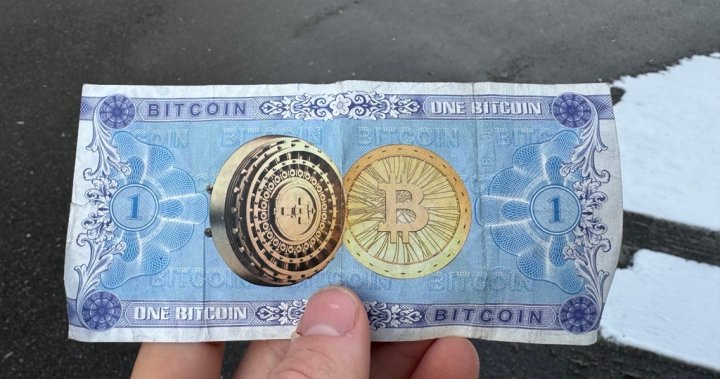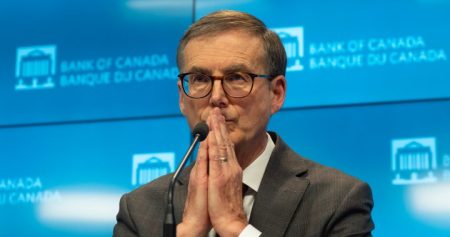On a bustling, snow-dusted holiday morning on Calgary’s Stephen Avenue, Brent Garrow, a man grappling with homelessness for the past six months, experienced a fleeting moment of hope amidst the harsh reality of his situation. Accustomed to the kindness of strangers offering coffee, food, or spare change, Garrow received an unexpected gift from a well-dressed man: a simple piece of paper resembling a banknote, accompanied by a “Happy holidays” greeting. Initially dismissing it as insignificant, Garrow’s curiosity piqued, leading him to examine the note more closely. Upon discovering the paper’s purported link to Bitcoin, a cryptocurrency then valued at over $130,000 Canadian, a surge of optimism mixed with skepticism coursed through him. Could this seemingly ordinary piece of paper be the key to a life-altering transformation?
Garrow, unfamiliar with the intricacies of the cryptocurrency world, reached out to Global News, seeking validation of this potential windfall. The prospect of possessing such a substantial sum was tantalizing, a beacon of hope in a life marred by hardship. However, his hopes were soon dashed. The note, it turned out, was merely a worthless piece of paper, devoid of any actual connection to Bitcoin. The incident underscored the allure and mystique surrounding cryptocurrencies, particularly Bitcoin, and the widespread, yet often incomplete, understanding of their workings.
The incident highlights the fundamental difference between physical currency and digital assets like Bitcoin. While traditional money exists in tangible forms like banknotes and coins, cryptocurrencies reside in the digital realm, managed through online “wallets” that interact with the blockchain, a decentralized and secure ledger. While some cryptocurrency users choose to print out their wallet information, typically in the form of a QR code or a string of 24 random words known as a seed phrase, the note Garrow received lacked these crucial elements. The absence of these identifiers confirmed the note’s lack of value, shattering Garrow’s dream of a sudden escape from homelessness.
Dennis Kasukawa, CEO of Vancouver Bitcoin, explained the essential components required for a piece of paper to represent a Bitcoin holding. These include a QR code or the underlying data the code represents: a 24-word seed phrase that acts as a unique key to accessing one’s cryptocurrency wallet. These security measures are crucial for protecting digital assets in the decentralized world of cryptocurrencies. Kasukawa, having witnessed the surge in cryptocurrency adoption since starting his business in 2018, acknowledged the growing public awareness, yet emphasized the persistent misconceptions surrounding digital currencies.
Kasukawa further elucidated the nature of Bitcoin’s value, highlighting its dependence on collective belief and its limited practical use in everyday transactions. He compared it to gold, a store of value rather than a readily spendable currency. While Bitcoin holds potential as an investment, Kasukawa cautioned against viewing it as a guaranteed path to quick riches, emphasizing the importance of informed decision-making and avoiding the “get-rich-quick scheme” mentality. This advice underscores the need for cautious and informed investment strategies in the volatile cryptocurrency market.
For Garrow, the experience served as a stark reminder of the realities of his situation. While the $130,000 windfall remained a fantasy, his immediate needs remained tangible and pressing. A mere $1,500 – a fraction of the Bitcoin’s purported value – could provide him with a month’s rent, a damage deposit, and food, offering temporary respite from the streets. The incident, though ultimately disappointing, underscored the profound impact even a modest sum could have on transforming his life, providing a glimpse of stability and hope amidst the ongoing struggle with homelessness. The narrative underscores the complexities of cryptocurrency, the allure of sudden wealth, and the harsh realities faced by those experiencing homelessness.










